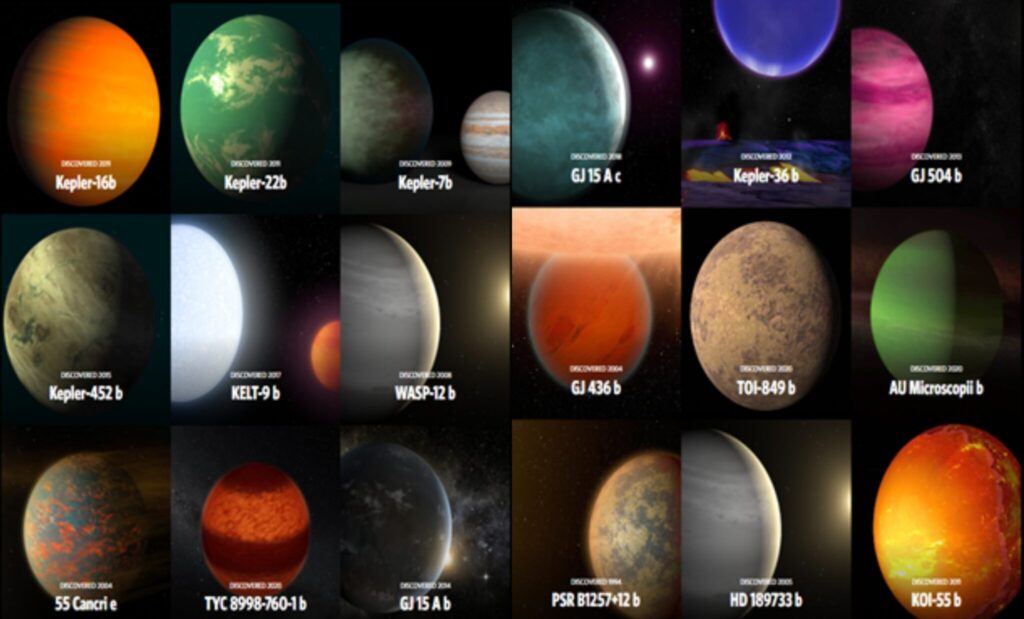Introduction

In the vast expanse of the cosmos, Earth is just a tiny speck. For centuries, humans have pondered the question: Are we alone in the universe? With the advent of advanced telescopes and sophisticated detection methods, we’re closer than ever to finding the answer.
What are Exoplanets?
Exoplanets, or extrasolar planets, are planets that orbit stars other than our Sun. These celestial bodies come in a dazzling variety of sizes, compositions, and orbital characteristics. Some are rocky, like Earth, while others are gas giants, dwarf planets, or even “super-Earths” with masses several times greater than our own planet.
Methods of Exoplanet Detection
Astronomers employ several techniques to detect exoplanets:
- Radial Velocity Method: This method measures the slight wobble of a star caused by the gravitational pull of an orbiting planet.
- Transit Method: This technique involves monitoring a star’s brightness for periodic dips caused by a planet passing in front of it.
- Microlensing: This method uses the gravitational lensing effect of massive objects to detect exoplanets.
- Direct Imaging: This technique involves directly capturing images of exoplanets, often using advanced imaging techniques and sophisticated instruments.
The Significance of Exoplanet Discovery
The discovery of exoplanets has profound implications for our understanding of the universe and our place within it. By studying these distant worlds, scientists can:
- Uncover the Conditions for Life: By analyzing the atmospheres and compositions of exoplanets, researchers can determine if they could potentially harbor life.
- Test Theories of Planetary Formation: Exoplanets provide valuable data to refine and test our theories about how planets form and evolve.
- Explore the Diversity of Planetary Systems: Studying diverse planetary systems can help us understand the range of possibilities for planetary formation and evolution.
The Future of Exoplanet Research
As technology continues to advance, we can expect to discover even more exoplanets, some of which may be habitable. Future missions, such as the James Webb Space Telescope, will play a crucial role in characterizing these distant worlds and searching for signs of life.
Conclusion
The quest for exoplanets is one of the most exciting frontiers in astronomy. As we continue to explore the cosmos, we may soon find that Earth is not the only planet capable of supporting life. The universe, it seems, is full of surprises, and the discovery of exoplanets is just the beginning.


Hello.
Good cheer to all on this beautiful day!!!!!
Good luck 🙂